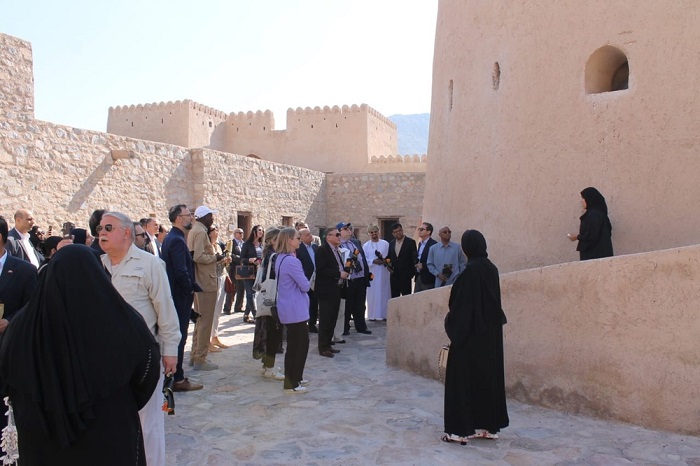The Ministry of Heritage and Tourism in Muscat recently reported a significant increase in the number of visitors to castles, forts, and historical monuments in the Musandam Governorate. In 2023, a total of 25,009 visitors explored these cultural sites, while as of June 2024, 23,535 visitors had already visited. Maryam bint Ahmed Al Shehhi, the head of the Craft Heritage Section of the Heritage and Tourism Department in Musandam Governorate, highlighted the unique historical significance of landmarks such as Khasab and Al Kamazra forts in Khasab, Bukha fort in Bukha, and Dibba fort in Dibba. These attractions draw visitors from around the world and provide a captivating glimpse into Oman’s rich history.
Al Shehhi emphasized the potential for investment in these historical sites by individuals and the private sector, which can lead to job creation and innovative ways of operating and maintaining the castles and forts. She noted that this initiative aligns with the Sultanate of Oman’s ten-year plan to develop tourist heritage sites and cultural elements, fostering sustainable investment in heritage, culture, and arts. By offering these sites for tourism investment, the government aims to stimulate the economy and provide diverse and unique tourism experiences for visitors. The administration in Musandam Governorate also collaborates with local stakeholders to organize events for productive families, craftsmen, and small and medium enterprises, showcasing Omani crafts and supporting local businesses.
Bassam bin Mohammed Al Kamzari, the head of the Antiquities and Museums Department in Musandam Governorate, discussed ongoing efforts to develop archaeological sites of exceptional value as tourist destinations. One such project is the construction of the Dibba Archaeological Visitor Center, which began earlier this year with funding from OQ and the Musandam Governor’s Office. This archaeological site dates back to the first millennium BC and contains numerous tombs, skeletons, pottery, and jewelry from the early Iron Age. Al Kamzari highlighted the collaboration between the Ministry of Heritage and Tourism and archaeological missions to excavate and preserve these valuable artifacts, ensuring their protection from external damage.
In addition to developing archaeological sites, there is a focus on supporting and enhancing private museums in the region. Efforts are underway to construct modern buildings or restore existing sites to house rare artifacts and promote them as new additions to Oman’s public museum system. Specialists regularly visit private museums to assess their operations, provide support, and ensure the quality of services offered to visitors. By investing in these cultural assets and promoting sustainable tourism, Musandam Governorate aims to preserve Oman’s rich heritage, stimulate economic growth, and offer visitors a unique glimpse into the country’s past.
Overall, the increased interest in Musandam Governorate’s historical sites reflects a growing appreciation for Oman’s rich cultural heritage among visitors. By investing in the preservation and development of these landmarks, the government and local stakeholders are not only creating job opportunities and stimulating economic growth but also ensuring that future generations can continue to learn from and appreciate Oman’s fascinating history. Through collaboration between the public and private sectors, Musandam Governorate is on track to become a premier destination for cultural tourism, offering visitors an immersive and educational experience in the heart of the Arabian Peninsula.









